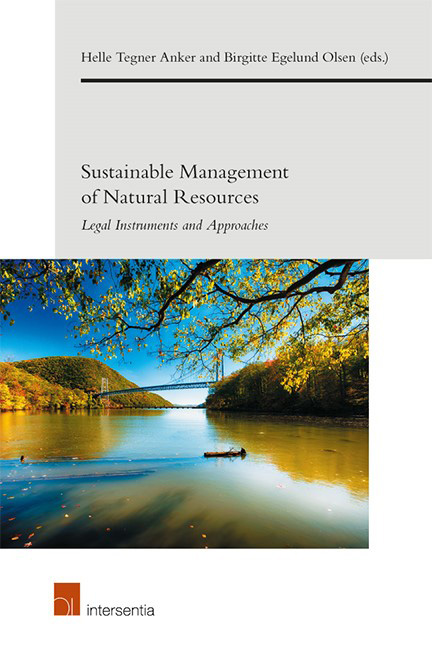Book contents
- Frontmatter
- Contents
- PART I INTRODUCTION
- PART II SUSTAINABILITY IN EU AND INTERNATIONAL LAW
- PART III SUSTAINABLE MANAGEMENT OF WASTE
- Chapter 5 Towards Responsible Management of Pharmaceutical Waste in the EU
- Chapter 6 Environmental Liability and Waste: Which Responsibilities for Landowners?
- PART IV ENVIRONMENTAL AND CLIMATE LITIGATION
- PART V ECOSYSTEM APPROACHES AND ADAPTIVE MANAGEMENT
- PART VI SUSTAINABLE RESOURCE MANAGEMENT: SPECIFIC ISSUES 193
Chapter 6 - Environmental Liability and Waste: Which Responsibilities for Landowners?
from PART III - SUSTAINABLE MANAGEMENT OF WASTE
Published online by Cambridge University Press: 31 January 2019
- Frontmatter
- Contents
- PART I INTRODUCTION
- PART II SUSTAINABILITY IN EU AND INTERNATIONAL LAW
- PART III SUSTAINABLE MANAGEMENT OF WASTE
- Chapter 5 Towards Responsible Management of Pharmaceutical Waste in the EU
- Chapter 6 Environmental Liability and Waste: Which Responsibilities for Landowners?
- PART IV ENVIRONMENTAL AND CLIMATE LITIGATION
- PART V ECOSYSTEM APPROACHES AND ADAPTIVE MANAGEMENT
- PART VI SUSTAINABLE RESOURCE MANAGEMENT: SPECIFIC ISSUES 193
Summary
ABSTRACT
A recent report elaborated by the European Environmental Agency has drawn public attention to the alarming conditions of soils in the European territory. A significant number of lands require urgent remediation measures to halt the loss of biodiversity and health risks as well as to secure soil sustainable use for the future. The European Union has already issued a Thematic Strategy for Soil Protection in 2006 and then tackled the issue in the Seventh Environment Action Programme of 2014, but the question is far from being resolved. From a juridical point of view, it is necessary to clearly establish who is liable/responsible for the clean-up and decontamination of polluted soils and the chapter discusses the liability/responsibility of the owner of a contaminated soil in regard to its remediation. The boundaries of this liability/responsibility are not well defined since soil is not subject to a comprehensive and coherent set of rules at EU level; the relevant provisions must thus be found in the EU directives in force and in particular in the Directive on Environmental Damage (Directive 2004/35/EC) and the Waste Framework Directive (Directive 2008/98/EC).
INTRODUCTION
A recent report by the European Environmental Agency estimates that in 2011 local soil contamination amounted to 2.5 million potentially contaminated sites in the 39 EEA countries, of which about 45 per cent have been identified to date and to 342,000 contaminated sites, of which about 1/3 have been identified. Only about 51,000 of these identified sites have already been remedied and the others are still awaiting the necessary clean-up and preventive measures, increasing health risks and causing irreparable loss of biodiversity. The EU had already considered this issue in 2006 when it adopted a Thematic Strategy for Soil Protection with the objective to protect soils across the EU; in 2014 the EU returned on the topic and elaborated the Seventh Environment Action Programme, which recognized that soil degradation is a serious challenge and laid down a series of objectives to be reached by 2020. The United Nation also considered the restoration of degraded land and soil as well as the halt of the loss of biodiversity as an urgent goal in the 2030 Agenda for sustainable development issued in 2015.
- Type
- Chapter
- Information
- Sustainable Management of Natural ResourcesLegal Instruments and Approaches, pp. 81 - 96Publisher: IntersentiaPrint publication year: 2018



